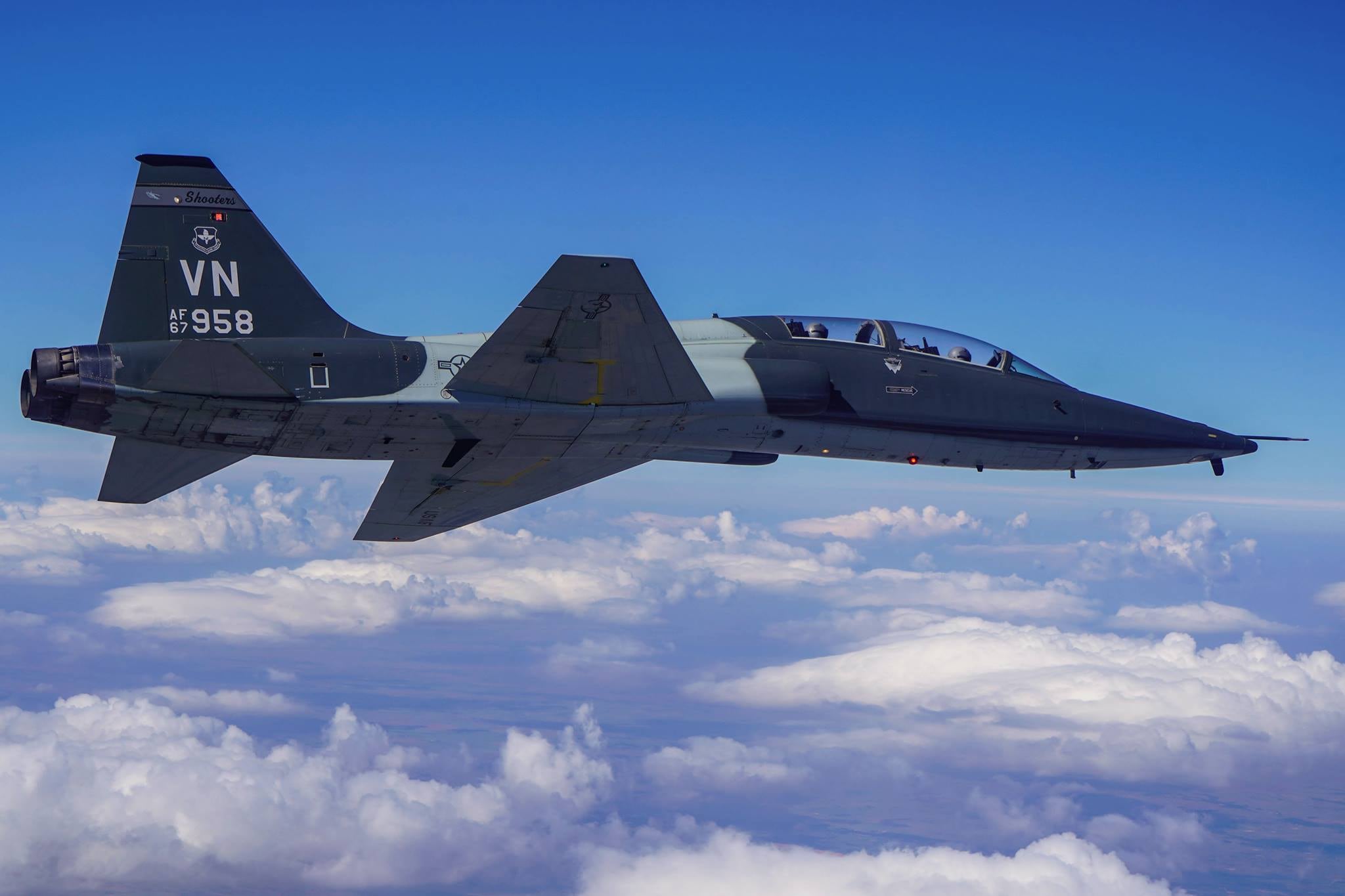The Air Force has stopped requiring student pilots to practice formation landings after the deaths of two pilots attempting to carry one out while flying the T-38C Talon.
Instructor pilot Lt. Col. John “Matt” Kincade, 47, and student pilot 2nd Lt. Travis Wilkie, 23, died in a crash Nov. 21 at Vance Air Force Base in Oklahoma while trying to land side-by-side with another T-38. The report on the investigation into the accident, released May 1, said the crash was caused by missteps taken by Wilkie and because Kincade did not take control of the plane from Wilkie in time.
But Wilkie’s family blasted the report as “grossly and unjustly incomplete” for not including the formation landing attempt as a contributing factor. Such landings, especially in aging air frames like the nearly six decade-old T-38, are unnecessary and extremely dangerous, and should be stopped, Wilkie’s family said.
Air Education and Training Command confirmed in a statement that it stopped conducting formation landings on March 5. The change was first reported Tuesday by Air Force Magazine.
“On March 5, 2020, the United States Air Force directed the suspension of formation landing training in undergraduate pilot training,” AETC said. “We are constantly evaluating our training programs to ensure we provide the best possible pilots for our Air Force. Following an Air Force-wide review, we adjusted our syllabi to reflect the requirements of our fifth-generation Air Force and advances in avionics.”
In a statement Tuesday, Wilkie’s family expressed relief that the landings were stopped — but also anger that the Air Force didn’t tell them it had taken that step for more than two months.
The Wilkie family said that they asked the Air Force multiple times in writing since January if the landings were continuing and if so, why. They received no answer until Monday, when they were told the landings were suspended March 5, and said it was unclear why the Air Force didn’t disclose that earlier.
“This decision underscores and substantiates the failure of Air Force leadership to discontinue an archaic and dangerous training requirement, in a tired 58-year-old plane, before it took the life of our son Travis and his instructor pilot,” Wilkie’s family said. “We view it as a clear admission of culpability in contributing to the accident. It was misleading and unjust not to acknowledge formation landing as a contributing cause in their report and subsequent press release.”
RELATED

AETC said that the T-38C has “proven to be as safe as possible” and is a reliable aircraft, which has been improved several times.
While the Air Force began training pilots in the T-38 in the early 1960s, AETC said the T-38C — the model Wilkie was flying — began service in 2000 after receiving advanced avionics. The T-38C has since had its engines, ejection seats and structural components upgraded as part of a service life extension program, AETC said.
“Each aircraft that is put on the flying schedule is certified as mission-capable by professional maintenance teams, and undergoes full nose-to-tale ‘phase’ inspections every 450 flight hours,” AETC said.
AETC said that there have been 14 Class A mishaps in the T-38C since 1998, which resulted in eight deaths. Since adopting the T-38 in 1961, AETC said there have been 209 Class A mishaps in all models of the plane, which resulted in 147 deaths. Of those deaths, 85 were pilots.
AETC did not say why it did not inform Wilkie’s family or the public that it had stopped formation landings two months earlier.
Wilkie’s family said they are relieved no more student pilots will be required to conduct these landings, and thanked Rep. Scott Peters, D-California, for pushing the Air Force to make this change.
“With [Peters'] support we intend to accomplish additional specific objectives in the coming months,” the Wilkie family said. “As an Air Force Academy graduate, Travis cared deeply for his former classmates and student pilots. Continuing to care for and advocate for them is what he would expect of us, in spite of our grief of losing him so painfully early at age 23.”
Stephen Losey is the air warfare reporter for Defense News. He previously covered leadership and personnel issues at Air Force Times, and the Pentagon, special operations and air warfare at Military.com. He has traveled to the Middle East to cover U.S. Air Force operations.




